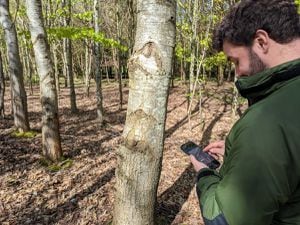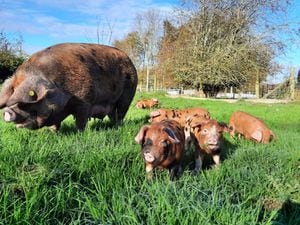Market Drayton pig farm on way despite protests
Plans to rear nearly 2,000 pigs on a Market Drayton farm have been approved, despite 100 letters concerned about animal welfare.

The bid to create a hand-rearing pig farm next to Adderley Road, has been given the go-ahead by Shropshire Council's north planning committee.
A total of 128 letters were sent in against the plans as part of a campaign launched by Viva! – a group "campaigning for animals, fighting for change" with objections over animal welfare and risk to human health.
Another 17 objections were put in against the plans from residents, along with nearby farms, a pub and Adderley Parish Council, with many fearing there will be noise from the pigs, pollution into water sources and an increase in traffic.
Richard Denison, case officer for the council, said a number of letters in support of the plans were also received, including from the National Pig Association and fellow farmers.
Councillor Pauline Dee, member of Shropshire Council's north planning committee, said: "There was a lengthy debate about the plans to make sure they were right.
"What got my vote was currently only 46 per cent of our pork comes from this country. Hopefully these plans will lead to a successful business."
Mr Denison said: "The pigs will be delivered to site as 28-day-old weaned piglets at about seven kg and will be removed from the site from week 15 over a five-week period in batches of 400 based on a finished weight of 110kgs.
"Once the final batch are removed the site will be cleaned and disinfected prior to the delivery of the next batch."
Mr Denison said the pigs must be reared in batches of 1,980, at a rate of just over two batches a year – some 4,000 pigs each 12 months.
The planning officer said that the application, put forward by Lee Gilbert will be under "high welfare and management standards" which includes quarterly monitoring of herd health and welfare.
He added that while there were concerns over odour management, the wind generally blew in a direction over open fields.
He said: "Odour emission rates from pig buildings depend on many factors and are highly variable.
"At the beginning of a growth cycle then the pigs are smaller litter/flooring is clean and only minimum ventilation is required and the odour rate is small.
"Towards the end of the growth cycle odour production with the pig building will increase, the pigs are larger and ventilation requirements are greater.
"Therefore, emission rates are greater. Odour emission rates are likely to occur when the building is cleared of manure and spent litter and/or stored slurry is removed."
The applicant, Mr Denison said, has grown up in the local area and has worked on farms during his childhood and is now seeking to set up his own farming enterprise.





